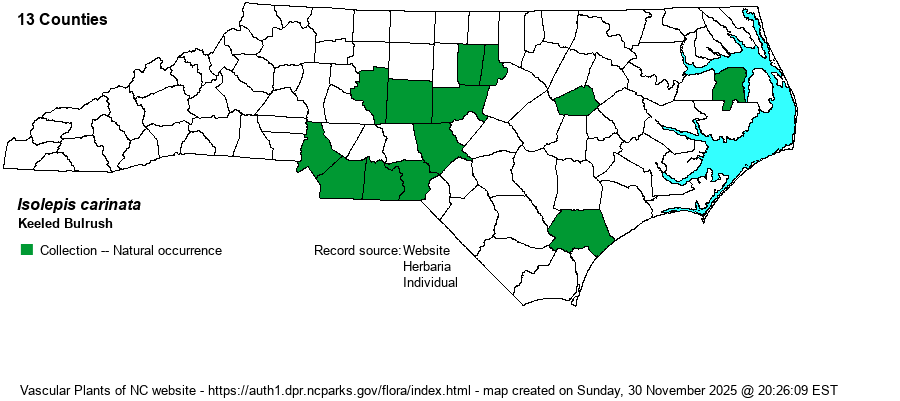| Author | Hooker & Arnott ex Torrey | |
| Distribution | So far, documented from the Lower Piedmont and the outer Coastal Plain, with a broad gap between these regions. The gap is likely to be filled in with additional fieldwork, at least partly, as the species is easy to overlook. Specimens from Beaufort and Swain Counties (herbarium GEO and GSMNP) are misidentified. A specimen from "Buncombe County" actually was collected in SC.
Southeastern VA to IL and KS, south to northern FL and TX; disjunct to CA. | |
| Abundance | Rare to uncommon in the lower Piedmont; rare on the outer Coastal Plain. Seemingly very rare otherwise in the Coastal Plain. This is a Significantly Rare species, though the website editors feel that there are enough records to move the State Rank from S1 to S2. In Anson County (June 2023) there are dozens of robust plants that form spreading rosettes or platters up to 8 inches across in a powerline through irregularly wet mafic soil. | |
| Habitat | Margins of granitic flatrocks, moist grassy roadsides, along moist paths and dikes, fallow cropfields, openings in floodplains, powerlines. | |
| Phenology | Flowering and fruiting May-July. | |
| Identification | Keeled Bulrush is normally a diminutive plant with several slender, wiry stems only 3-6 inches tall (but elsewhere reported up to 8 inches), with 1-2 small spikelets at the summits of the stems. The floral scales have a raised midrib or low keel. The floral scales do not have bristles or awns, unlike Cyperus subsquarrosus, and the spikelets are too small and the wrong shape for Cyperus hortensis and allies. | |
| Taxonomic Comments | In some older texts, called Scirpus koilolepis.
| |
| Other Common Name(s) | None | |
| State Rank | S1 [S2] | |
| Global Rank | G5 | |
| State Status | SR-P | |
| US Status | | |
| USACE-agcp | FACW link |
| USACE-emp | FACW link |

